-On the Road, Jack Kerouac
I have been involved in surgery for
thirty years, and I am amazed daily that people will willingly submit
to it. There is no greater example of the triumph of hope (and trust) over
fear. A wise surgical professor 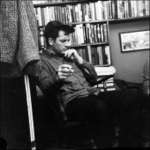 at Wisconsin
once lectured to our class that “an operation represents the
substitution of surgically induced pathology for the patient’s own pathology, in the hope that the surgical pathology will be
better tolerated.”
at Wisconsin
once lectured to our class that “an operation represents the
substitution of surgically induced pathology for the patient’s own pathology, in the hope that the surgical pathology will be
better tolerated.”
As I write this, I know that tomorrow, I will be caring for a patient in whom a neurosurgical colleague will be placing deep brain stimulators for Parkinsonism. The patient will be somebody who has such severe, medication resistant, brain-mediated joint rigidity and muscle tremors that going out to dine is more-or-less out of the question. Most of the people so afflicted avoid being seen in public at all. He will come to us, willing to undergo brain surgery while wide awake, in the hope that we can alleviate his disability. Sometimes the results are miraculous. Sometimes not.
So called "functional" or awake, neurosurgery is
performed for a variety of reasons. Usually, it is because the
procedure requires the active participation of the patient in
pinpointing areas of the brain; speech, motion and such. Normally, I
have a cart full of drawers full of vials full of clear liquids with
magical properties that allow me to modulate (and most typically abolish) my
patient's perceptions, memory, and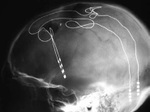 consciousness, and thus, overcome their pain and suffering during
surgery. But I don't get to use them here. (Well, the liquids would be magical, except our understanding
destroys the magic; "Mark Twain's experience comes to mind, in which,
after he had mastered the analytical knowledge needed to pilot the
Mississippi river, he had discovered the river had lost its beauty."
-Zen and the Art of Motorcycle Maintenance, Pirsig. (see also Sleep and Death are brothers).
consciousness, and thus, overcome their pain and suffering during
surgery. But I don't get to use them here. (Well, the liquids would be magical, except our understanding
destroys the magic; "Mark Twain's experience comes to mind, in which,
after he had mastered the analytical knowledge needed to pilot the
Mississippi river, he had discovered the river had lost its beauty."
-Zen and the Art of Motorcycle Maintenance, Pirsig. (see also Sleep and Death are brothers).
Functional neurosurgery is different; it is
primitive, bare-knuckled combat with pain, fear, and the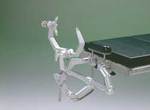 suffering that
pain and fear induce; I don't get to bring my guns to this fight. Yes,
I have local anesthetic, and usually some propofol for opening the
scalp and skull. But there is that moment of truth, when the patient,
head locked rigidly in Mayfield pins, will be wide awake underneath a
sterile drape almost alone in a roomful of people. It's him and me. I'm
only guessing here, but I'd guess the experience to be...terrifying. I
also imagine it might be...lonely, being the object of a lot of
technical attention
without being the object of personal attention. The
patient's sub-thalamic nuclei are the object of intense focus; their
soul is just along for the ride. I spend a longer time than usual in
pre-op with these patients. In the room, I
am never more than arm's length away. If they speak in a whisper, I
will hear. My hand is always there; I will hold their hand for a while
and then let go. If they
suffering that
pain and fear induce; I don't get to bring my guns to this fight. Yes,
I have local anesthetic, and usually some propofol for opening the
scalp and skull. But there is that moment of truth, when the patient,
head locked rigidly in Mayfield pins, will be wide awake underneath a
sterile drape almost alone in a roomful of people. It's him and me. I'm
only guessing here, but I'd guess the experience to be...terrifying. I
also imagine it might be...lonely, being the object of a lot of
technical attention
without being the object of personal attention. The
patient's sub-thalamic nuclei are the object of intense focus; their
soul is just along for the ride. I spend a longer time than usual in
pre-op with these patients. In the room, I
am never more than arm's length away. If they speak in a whisper, I
will hear. My hand is always there; I will hold their hand for a while
and then let go. If they 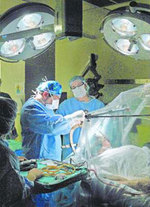 hold on, so do I. It's not like I have
anything more important to do; at that point, handholding and a reassuring presence
IS my "anesthetic". I play music they like on my IPOD. Nobody has ever
asked for Hip Hop, thank God. Lots of country, Sinatra (I prefer
Bennett), classic rock (when did that become old guy music?)
hold on, so do I. It's not like I have
anything more important to do; at that point, handholding and a reassuring presence
IS my "anesthetic". I play music they like on my IPOD. Nobody has ever
asked for Hip Hop, thank God. Lots of country, Sinatra (I prefer
Bennett), classic rock (when did that become old guy music?)
We do some things to make it better, my favorite being the use of a clear plastic sterile drape that goes straight up from the patient's forehead. We used to use a mayo stand above the patient's face, but this is better; they can gaze up at the OR lights or around at the Stealth surgical navigation computer (more magic) at the foot of the room-less claustrophobic and isolating.
The awake part can last two or three hours for a Parkinson's procedure; less for essential tremors-the brain targets are bigger. These cases are professionally challenging in a different way from complex cardiac or neuro-vascular. Low tech/high touch. At the end I am invariably emotionally exhausted, and need a break for 30 minutes or so to recharge.
Maybe because I know that I have more years behind me than in front of me (and they zoom by now, instead of crawl), but I find that the boundaries between me and the patients I care for are blurring. Maybe the Zen instruction, "don't compare, identify" has finally seeped in. I don't know. But I do think that almost three decades in practice has knocked some sense into me. Sometimes, I think that the lesson of the crucifixion of Christ is that really, we're all in it together, bound by our shared common mortality. The complete Kerouac quote, by the way is "And now left to die and disappear in their own way into the common dark of all our deaths." If you want to see Kerouac reading it, go here.
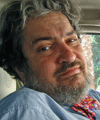 Mitch Keamy is an anesthesiologist in Las Vegas Nevada
Mitch Keamy is an anesthesiologist in Las Vegas Nevada
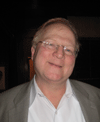 Andy Kofke is a Professor of Neuro-anesthesiology and Critical Care at the University of Pennslvania
Andy Kofke is a Professor of Neuro-anesthesiology and Critical Care at the University of Pennslvania
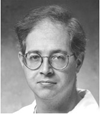 Mike O'Connor is Professor of Anesthesiology and Critical Care at the University of Chicago
Mike O'Connor is Professor of Anesthesiology and Critical Care at the University of Chicago
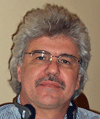 Rob Dean is a cardiac anesthesiologist in Grand Rapids Michigan, with extensive experience in O.R. administration.
Rob Dean is a cardiac anesthesiologist in Grand Rapids Michigan, with extensive experience in O.R. administration.
Terrific post. Nice mix of the scientific and the personal. I wish all anesthesiologists held such a responsible view, but we all know there are all kinds.
Posted by: Rob | September 03, 2024 at 09:56 AM
Wow, that was a fantastic post. Thank you for holding your patients hands as long as they need it. Probably the best anesthetic in your arsenal.
Posted by: Dr. Val | September 03, 2024 at 11:09 AM
Very nice post. Sure glad you are there no matter which side of the table I happen to be on.
Posted by: rlbates | September 03, 2024 at 02:46 PM